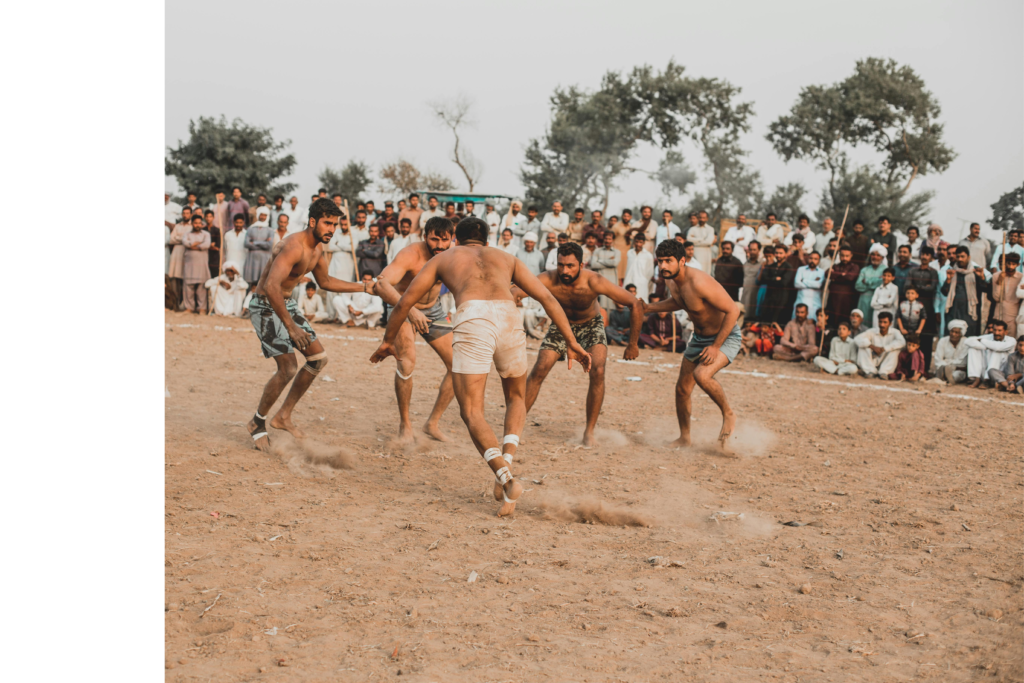Kabaddi is one of India’s oldest sports, tracing its roots back over 4,000 years to ancient times. It combines the athleticism of wrestling with the strategy of tag, challenging players to outwit their opponents through speed, strength, and quick thinking. The sport is played between two teams, with each side taking turns sending a “raider” into the opposing team’s half of the court. The raider’s objective is to tag as many opponents as possible and return to their side without getting caught—all in one breath.
How Kabaddi is Played
The game has two main forms: Standard Kabaddi, which is played on a rectangular court with seven players on each team, and Circle Kabaddi, played on a circular field and popular in certain parts of India and neighboring countries. Kabaddi matches are intense and thrilling, with players relying on teamwork, agility, and defensive strategies to win.
Kabaddi is known for its inclusivity as it requires minimal equipment, making it accessible for people of all backgrounds. Historically, it’s been a rural sport, but today it has achieved national fame and is celebrated across both urban and rural areas in India.
The Rise of Kabaddi Leagues in India
The Pro Kabaddi League (PKL) has been the game-changer in bringing this sport into the mainstream. The league was launched in 2014 by Mashal Sports Pvt. Ltd., with backing from Star India, inspired by the success of the Kabaddi competition in the 2006 Asian Games. The PKL follows a franchise model similar to the IPL (Indian Premier League) and features teams representing various cities.
Pro Kabaddi League Structure
The Pro Kabaddi League consists of multiple teams, each representing a different city or region. The season generally follows a league format with a series of round-robin matches leading up to playoffs and, finally, the grand finale to determine the champion. Teams include popular names like the Patna Pirates, Jaipur Pink Panthers, Bengal Warriors, and U Mumba, which have gained dedicated fan bases over the years.
Each team has a mix of Indian and international players, as the PKL has also attracted talent from countries like Iran, South Korea, Kenya, and Bangladesh. The league uses an auction system where teams bid for players, which has significantly increased the earnings and recognition of Kabaddi players.
PKL’s Impact on Kabaddi
- Increased Popularity: The PKL has given Kabaddi a modern makeover, with colorful uniforms, branding, and television broadcasting. This has attracted millions of viewers and generated a new fanbase, particularly among the youth.
- International Recognition: Kabaddi is now played in various countries, and the league’s popularity has helped it become an international sport, with leagues and tournaments emerging in countries outside of India.
- Financial Upliftment for Players: Players who once played Kabaddi at a grassroots level are now stars with lucrative contracts, sponsorships, and endorsement deals.
- Increased Female Participation: The PKL has also inspired women’s leagues and tournaments, giving female athletes a platform and helping to promote gender equality in sports.
Future of Kabaddi in India
The success of the PKL has paved the way for a bright future for Kabaddi in India. Plans to expand the league, coupled with efforts to bring Kabaddi into the Olympics, aim to boost its popularity on a global scale. With a strong cultural foundation, accessible gameplay, and now a robust professional league, Kabaddi is set to grow, inspiring the next generation of athletes and fans.
Conclusion
Kabaddi has evolved from an ancient sport into a popular league-based game that resonates with millions. The Pro Kabaddi League has been instrumental in transforming the sport, proving that traditional games can achieve global fame with the right support and promotion. Kabaddi stands as a testament to India’s rich cultural heritage and a symbol of modern sportsmanship, bridging the gap between tradition and innovation.
- Affiliate products

Kabaddi Kabaddi………
